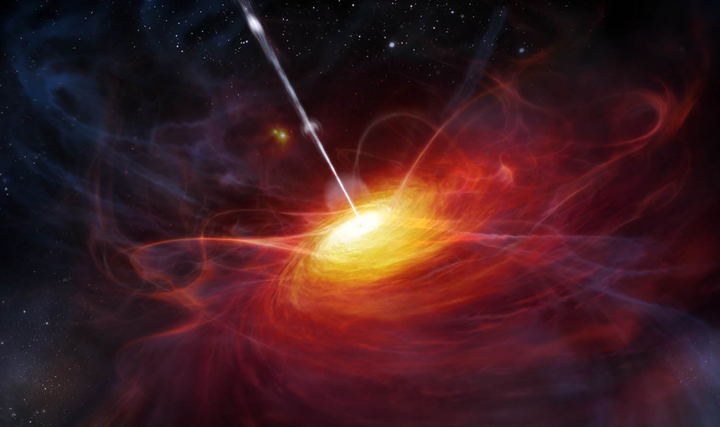TORONTO – A team of astronomers have found a black hole that is 12 billion times the mass of the sun.

To put that in perspective, the sun is about 333,000 times the mass of Earth; about 1.3 million Earths could fit inside it. Now think about an object 12 billion times more massive.
READ MORE: Black holes may not be so black, new Stephen Hawking paper states
It’s believed that most galaxies have a supermassive black hole at their centre. The black hole at the centre of our galaxy has a mass that is about 4.5 million times that of the sun.
Not only is the black hole massive, but it’s also incredibly bright: it lies at the centre of a quasar that pumped out a million billion times the energy of our sun. Quasars are some of the oldest — and brightest — objects in the universe.
The growth rate of black holes is believed to have a limit. But this one seems to have grown very quickly, challenging that belief.
“Forming such a large black hole so quickly is hard to interpret with current theories,” said Dr. Fuyan Bian, from the Research School of Astronomy and Astrophysics at the Australian National University, and author of the paper that appeared in the journal Nature.
This black hole is believed to have formed very early after the birth of our universe, around 875,000 years after the Big Bang.


Comments